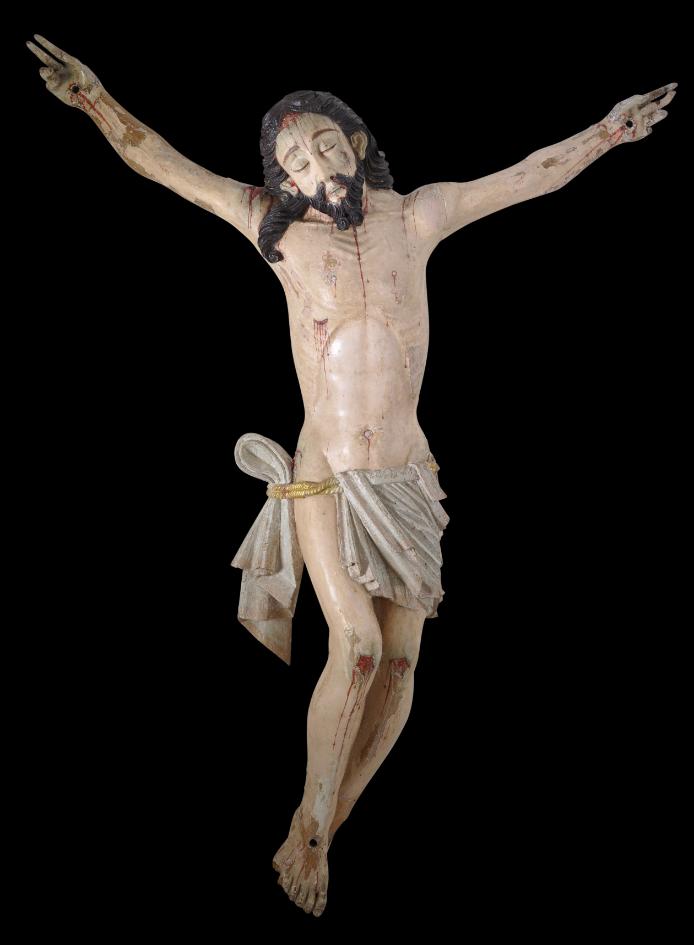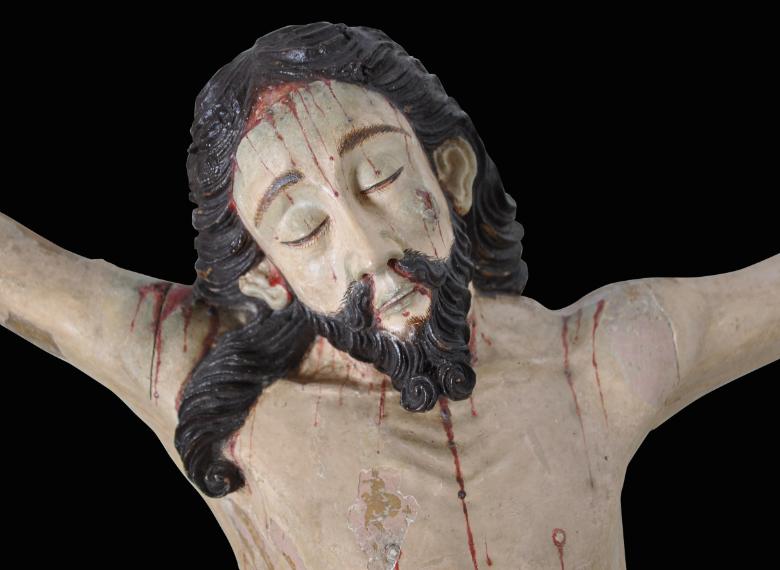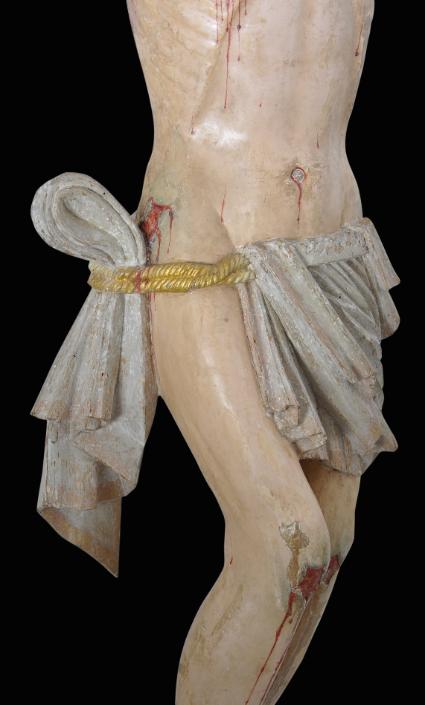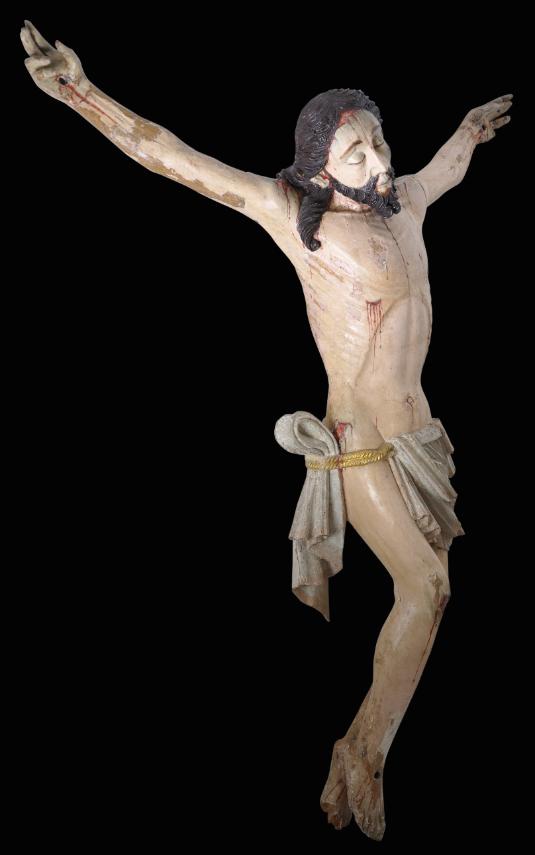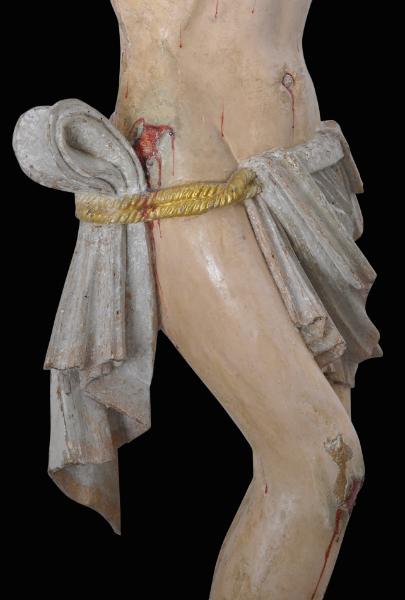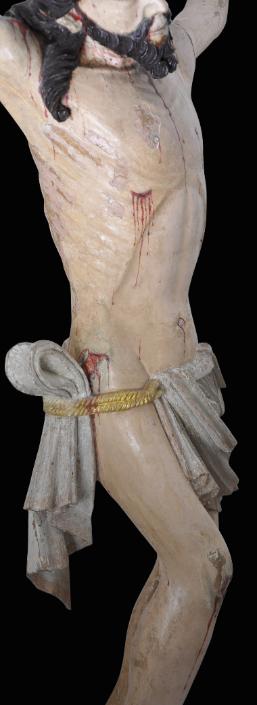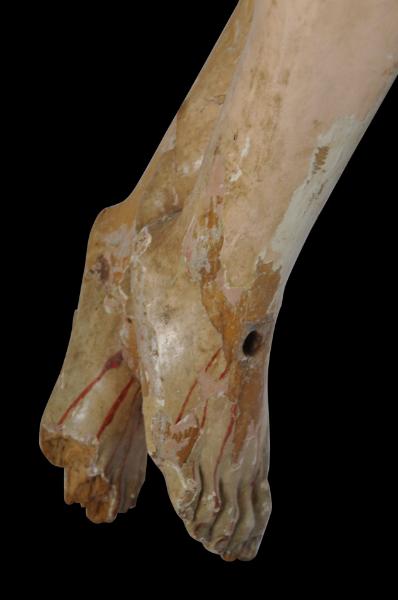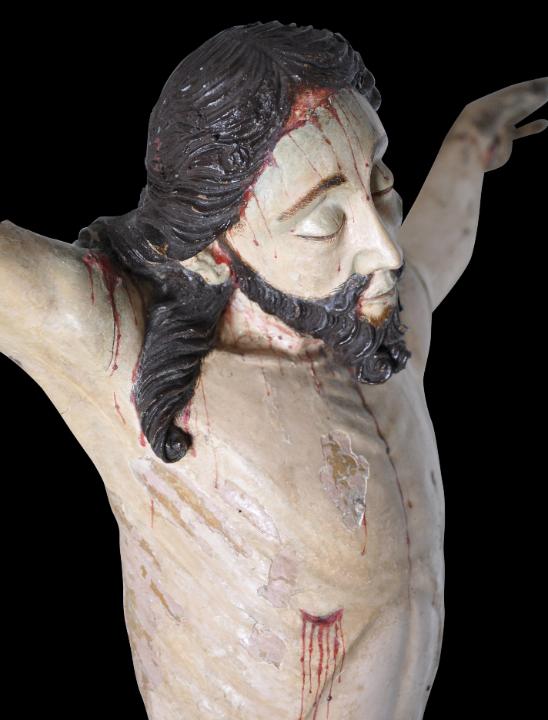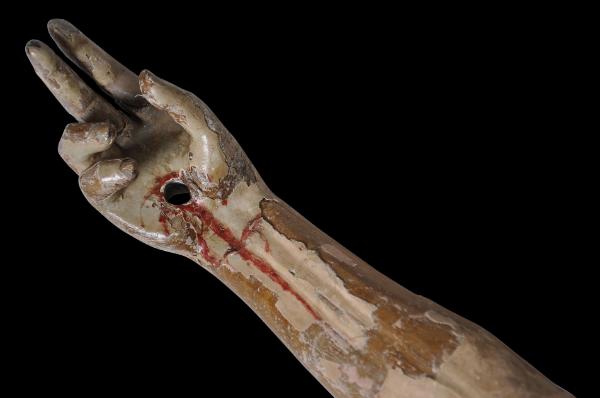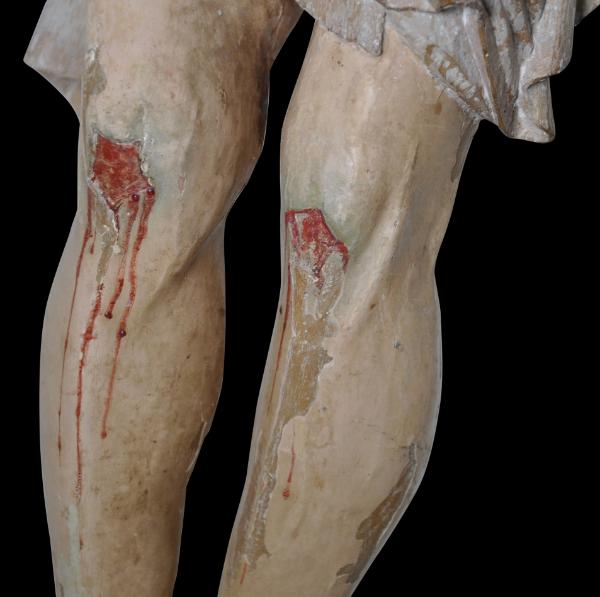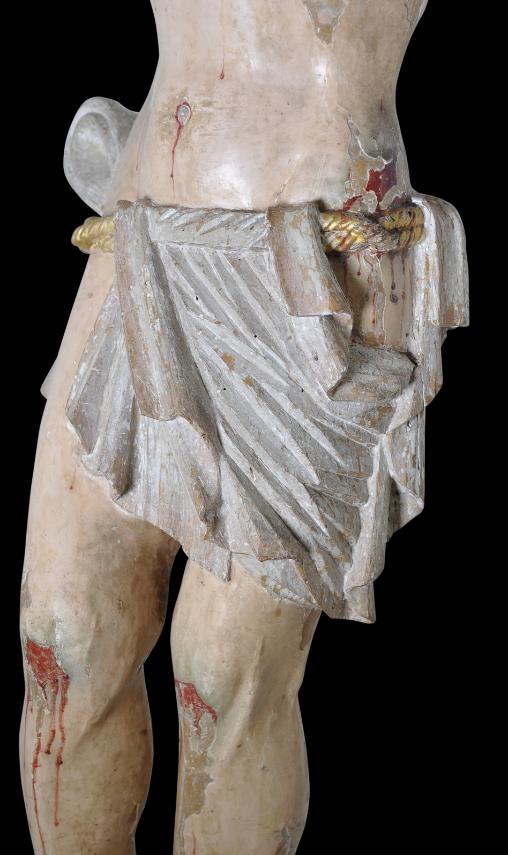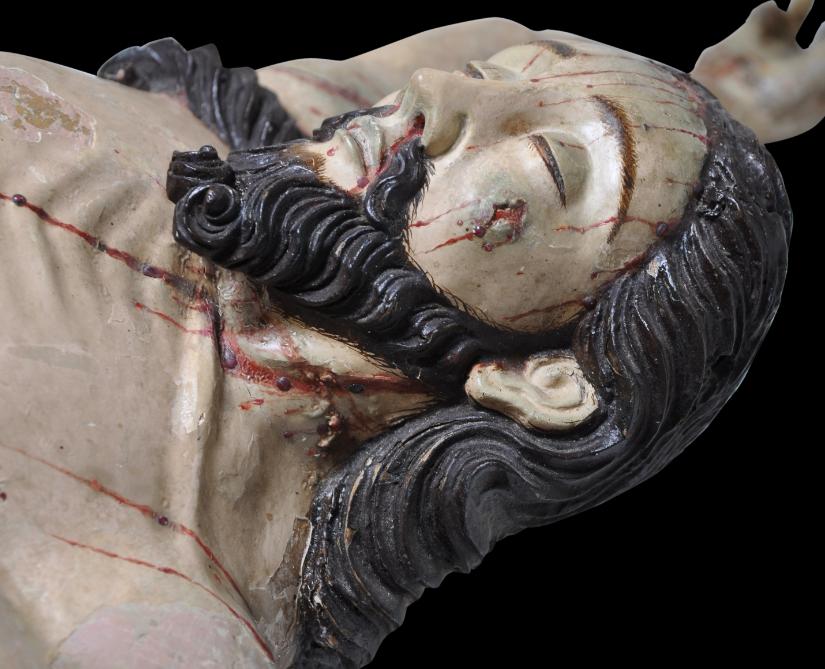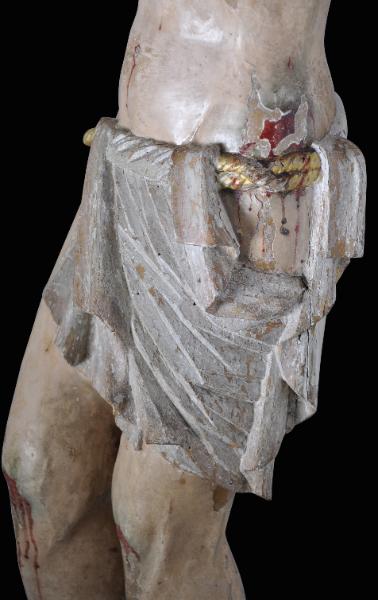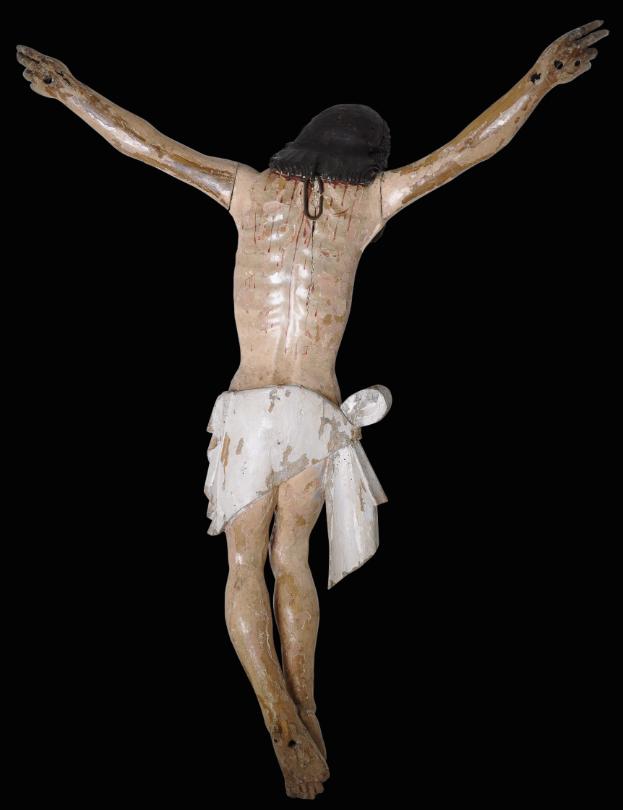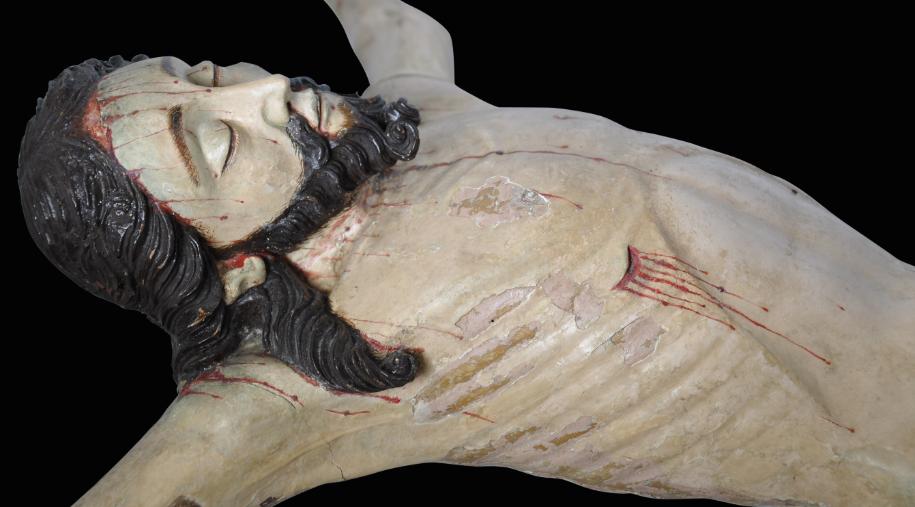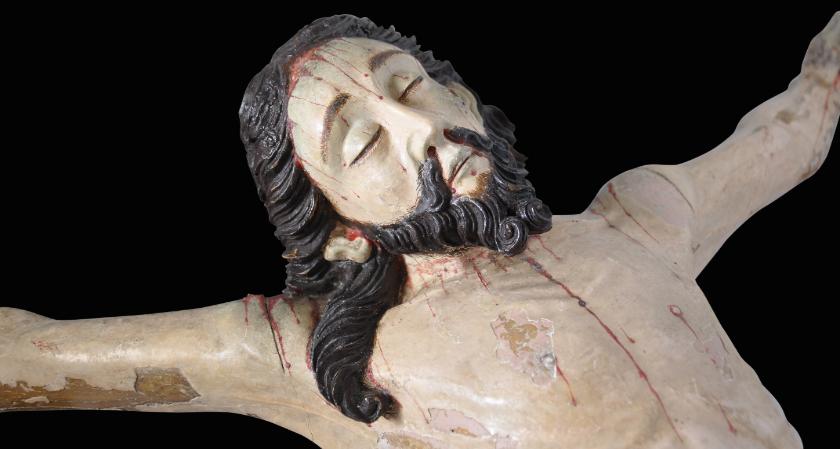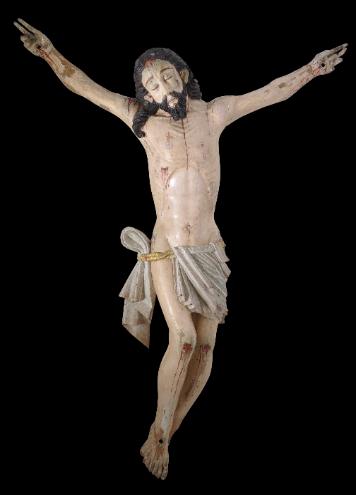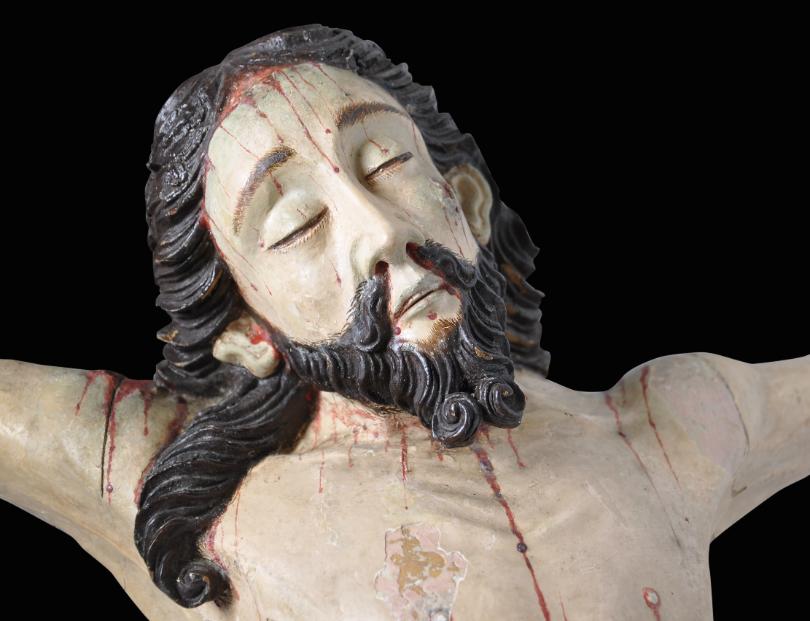
Philippines Colonial Corpus Christi
Large Spanish Colonial Polychrome & Wood Santo Cristo or Corpus Christi
Philippines, or possibly Macaolate 17th-early 18th century
height (approx.): 88cm, width: 84cm
This superbly carved figure of the crucified Christ is of wood, and decorated in pink, yellow, black and red polychrome.
A number of features point to origins in the colonial Philippines or perhaps in nearby Macao. The number of small wounds across the body – surmised wounds in addition to those specifically mentioned in Bible, all of which lead to trickling blood – is in keeping with the colonial preference for Christ’s suffering to be more explicitly portrayed. The face is more angular and perhaps more Chinese looking than might be expected for a Spanish example of a similar period (many artisans were ethnically Chinese – usually Hokkiens from nearby Fujian province.) The curve of the body emulates the natural curve of an ivory tusk – in the Philippines, carved wooden examples tended to be based on ivory examples which often followed the natural curve of the tusk. The slight bend was seen as aesthetically superior. The setting of one arm above the other also is in keeping with the colonial Philippines aesthetic.
A colonial Spanish Philippines ivory Santo Cristo of similar form to the example here and with a near-identical loin cloth arrangement and double cord was sold by Christies’ Amsterdam in 2005, further suggesting the colonial origins of the example here.
Several other similar images in ivory that are attributable to the 17th-18th century Philippines are illustrated in Sanchez Navarro de Pintado (1986).
Such images were made in the Philippines for the Spanish market, but also, many Spanish-born friars took such images back to Spain in the aftermath of the revolution against Spain at the end of the nineteenth century.
The image here is beautifully carved. The face is highly naturalistic, as is the hair and beard. The wounds are presented in a sympathetic way and are subtle though copious.
The condition reflects its age – the toes on the hidden foot have been lost, the little finger of one hand is missing, the polychrome has flaked here and there but overall, it is a large, striking and powerful image in a good, stable condition given its age and the materials used.
References
Sanchez Navarro de Pintado, B., Marfiles Cristianos del Oriente en Mexico, Formento Cultural Banamex AC, 1986.
Trota Jose, R.,
Images of Faith: Religious Ivory Carvings from the Philippines, Pacific Asia Museum, 1990.Provenance:
private collection, UK.
Inventory no.: 2996
SOLD

